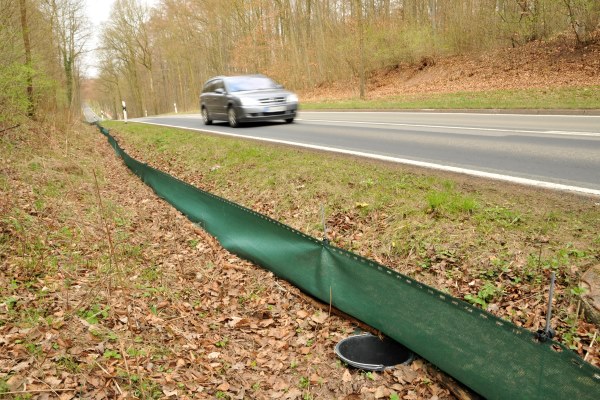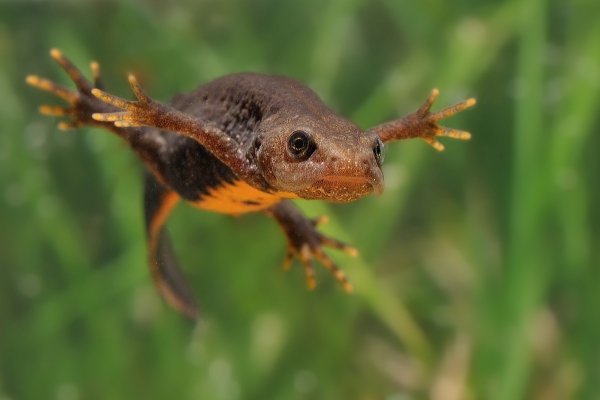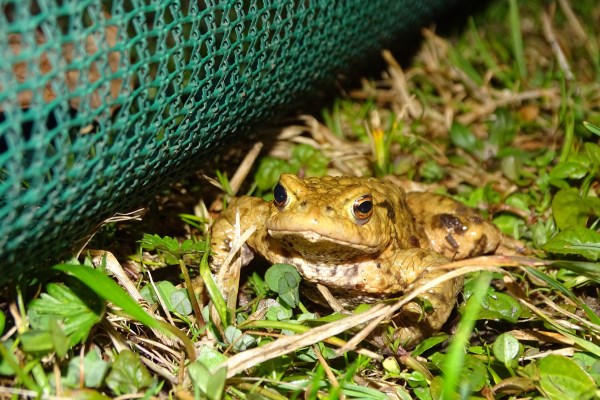
Amphibians, including frogs, salamanders, and newts, are vital components of our ecosystems, acting as both predators and prey within food webs and serving as bioindicators of environmental health. However, these creatures face numerous threats, including habitat loss, road mortality, and pollution. Amphibian fencing has emerged as an effective conservation tool designed to mitigate these threats by controlling amphibian movements and protecting sensitive habitats. By guiding amphibians away from hazardous areas, such as roads or development sites, this fencing not only prevents habitat destruction and reduces animal deaths but also supports broader biodiversity efforts, ensuring the survival of these ecologically significant species.
The Role of Amphibian Fencing in Protecting Wildlife
Prevention of Road Mortality
Amphibians are particularly vulnerable during their seasonal migrations, often crossing roads that bisect their natural habitats. This movement exposes them to significant risks, as many are struck and killed by vehicles. Amphibian fencing serves as a critical solution to this problem by guiding these animals away from roads and towards safer crossing points, such as tunnels or culverts. By preventing road mortality, fencing not only reduces the number of amphibian deaths but also supports the survival of entire populations, which might otherwise be decimated by road traffic during these critical migratory periods.
Reduction of Habitat Fragmentation
 In addition to preventing road mortality, amphibian fencing plays a key role in reducing habitat fragmentation, a significant threat to wildlife. Fragmented habitats can isolate amphibian populations, leading to reduced genetic diversity and increased vulnerability to environmental changes. Fencing helps maintain continuous habitats by controlling amphibian movements and directing them to safe areas, thereby connecting isolated populations. This connectivity is essential for promoting gene flow between populations, ensuring species survival, and supporting overall ecosystem health. By mitigating habitat fragmentation, amphibian fencing contributes to the long-term conservation of these ecologically important species.
In addition to preventing road mortality, amphibian fencing plays a key role in reducing habitat fragmentation, a significant threat to wildlife. Fragmented habitats can isolate amphibian populations, leading to reduced genetic diversity and increased vulnerability to environmental changes. Fencing helps maintain continuous habitats by controlling amphibian movements and directing them to safe areas, thereby connecting isolated populations. This connectivity is essential for promoting gene flow between populations, ensuring species survival, and supporting overall ecosystem health. By mitigating habitat fragmentation, amphibian fencing contributes to the long-term conservation of these ecologically important species.
Contribution to Biodiversity Conservation
Protecting Endangered Species
Amphibian fencing is crucial for the conservation of rare and endangered species in the UK, many of which are under threat from habitat loss, pollution, and climate change. Species such as the great crested newt and natterjack toad, both of which are protected under UK law, benefit greatly from the implementation of such fencing. By restricting access to dangerous areas and guiding these vulnerable species to safer habitats, amphibian fencing helps prevent population declines and supports recovery efforts. Protecting these species is vital not only for their survival but also for maintaining the delicate balance of the ecosystems they inhabit.
Supporting Ecosystem Health
Beyond protecting individual species, amphibian fencing plays a significant role in supporting overall ecosystem health. Amphibians are key indicators of environmental quality due to their sensitivity to changes in water, soil, and air conditions. By preserving amphibian populations, fencing helps maintain these indicators, allowing scientists to monitor the health of entire ecosystems. Additionally, amphibians contribute to broader ecosystem stability by controlling insect populations and serving as prey for a variety of predators. Ensuring the survival of amphibians through fencing not only protects these species but also sustains the intricate web of life that depends on their presence.
Preventing Habitat Destruction
Mitigating Human Impact
Amphibian fencing plays a crucial role in mitigating the impact of human activities on sensitive amphibian habitats. As urbanisation, agriculture, and infrastructure development expand, these activities often encroach on the natural environments that amphibians rely on for survival. Fencing acts as a protective barrier, preventing amphibians from wandering into areas where they may be harmed by machinery, chemicals, or habitat destruction. For example, during construction projects, fencing can be used to keep amphibians out of dangerous zones, ensuring that their populations remain undisturbed. Similarly, in agricultural settings, fencing helps prevent amphibians from being exposed to harmful pesticides or being displaced by land use changes.
Protecting Sensitive Areas
Protecting sensitive areas such as wetlands, ponds, and other critical amphibian habitats is essential for the survival of these species. These habitats are often delicate ecosystems that provide the necessary conditions for breeding, feeding, and sheltering amphibians. Amphibian fencing serves as a safeguard, ensuring that these areas remain undisturbed by human activities or invasive species. By creating defined boundaries around these habitats, fencing helps preserve the integrity of these ecosystems, allowing amphibian populations to thrive. The preservation of these critical habitats is not only vital for amphibians but also supports broader biodiversity and the health of entire ecosystems.
Reducing Animal Deaths
Protecting Amphibians from Predators
In many ecosystems, amphibians face predation from a variety of animals, including birds, mammals, and invasive species like certain fish. By creating a physical barrier, fencing limits the access of these predators to areas where amphibians breed, feed, or hibernate, thereby reducing predation rates. This protective measure is particularly crucial during breeding seasons when amphibians are most vulnerable. By shielding these populations from predators, fencing helps to ensure the survival and growth of amphibian communities, contributing to their long-term conservation.
Minimising Human-Wildlife Conflicts
In addition to protecting amphibians from predators, fencing plays a significant role in minimising human-wildlife conflicts that often result in accidental amphibian deaths. Everyday activities such as lawn mowing, pesticide application, or even simple foot traffic can inadvertently harm or kill amphibians, especially in residential areas or agricultural lands. Amphibian fencing provides a clear boundary that keeps these creatures out of harm’s way, reducing the likelihood of such incidents. By preventing amphibians from entering areas where they may encounter these dangers, fencing not only safeguards individual animals but also helps maintain healthy populations, reducing the overall impact of human activities on wildlife.
Types and Implementation of Amphibian Fencing
Temporary vs Permanent Fencing
 Amphibian fencing comes in two primary types: temporary and permanent, each suited to different conservation needs. Temporary fencing is typically used for short-term projects, such as during construction or seasonal amphibian migrations. Made from materials like polythene sheets, it is designed to be cost-effective and easy to install and remove. On the other hand, permanent fencing is constructed from more durable materials, such as high-density polyethylene, and is intended for long-term use in areas where continuous protection is needed. This type of fencing is ideal for safeguarding critical habitats or areas with consistent amphibian traffic. Both types play essential roles in different conservation scenarios, providing flexible solutions to meet specific needs.
Amphibian fencing comes in two primary types: temporary and permanent, each suited to different conservation needs. Temporary fencing is typically used for short-term projects, such as during construction or seasonal amphibian migrations. Made from materials like polythene sheets, it is designed to be cost-effective and easy to install and remove. On the other hand, permanent fencing is constructed from more durable materials, such as high-density polyethylene, and is intended for long-term use in areas where continuous protection is needed. This type of fencing is ideal for safeguarding critical habitats or areas with consistent amphibian traffic. Both types play essential roles in different conservation scenarios, providing flexible solutions to meet specific needs.
Best Practices for Installation
Implementing amphibian fencing effectively requires careful planning and adherence to best practices for installation and maintenance. Proper placement is crucial; fencing should be installed at the right locations, such as along migration routes or around sensitive habitats, to maximise its protective benefits. Additionally, the fencing must be securely anchored and regularly inspected to ensure it remains intact and functional. Environmental considerations are also important, as the materials and installation methods used should minimise impact on the surrounding ecosystem. Long-term sustainability can be achieved by using durable, recyclable materials and by integrating fencing into broader conservation strategies. These practices ensure that the fencing provides lasting protection for amphibian populations while maintaining ecological balance.
Amphibian fencing is a vital tool in wildlife conservation, offering effective protection against threats such as habitat destruction, road mortality, and predation. By preserving critical habitats and reducing human-wildlife conflicts, fencing plays a key role in safeguarding amphibian populations and supporting broader biodiversity. As environmental challenges grow, the future of amphibian conservation will increasingly depend on proactive measures like fencing. Continued efforts to raise awareness and implement these protective barriers are essential to ensuring the survival of these ecologically important species. It is crucial that conservationists, policymakers, and communities work together to expand the use of amphibian fencing in protecting wildlife.